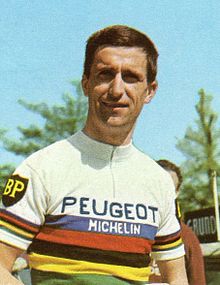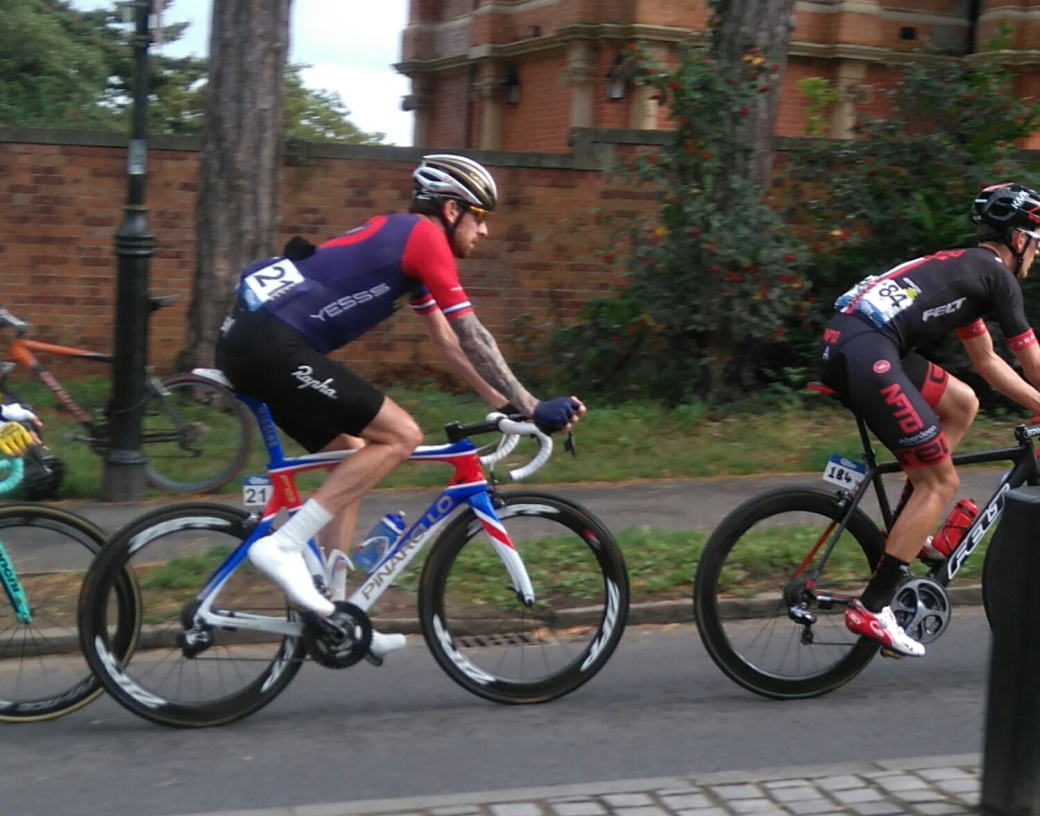13th July 1967
The 1967 Tour is infamous for one thing – the death of Tom Simpson, although unless you’re a cycling fan or student of Tour history you might not be fully aware of the whole story of what happened on 13th July 1967. Since the doping scandals of recent decades, Tour organisers ASO and some of the British cycling establishment have almost been afraid to mention Tom Simpson and what happened not far from the summit of Mont Ventoux. The fact that Simpson was carrying vials of amphetamines in his jersey pocket that day cannot be ignored, nor should it be. Doping is an indisputable if unpleasant part of the history of the Tour.
There had been an opportunity for the 2017 edition to acknowledge this history by visiting Mont Ventoux today, the 50th anniversary of Simpson’s death on the slopes of the mountain; however the organisers decided not to include the Giant of Provence in this years route, which many feel was a ploy to avoid having to address difficult questions.
Instead, many of Simpson’s friends, family, and fans will make their way to Provence in order to remember Tom Simpson – Bradley Wiggins will be amongst those on Ventoux today, posting a photo on his Twitter page yesterday at the foot of the mountain. Another Tour legend, Eddy Merckx, will also be amongst those making the pilgrimage to Provence.
Jeremy Whittle, author of Ventoux: Sacrifice and Suffering on the Giant of Provence, feels that the Tour organisers’ refusal to even acknowledge what happened in the race 50 years ago today was wrong. “Marking his death’s 50th anniversary would not suggest a glib acceptance of doping…it would simply be respectful and accepting…fans who knew him show more compassion for his memory than the organisers of the race in which he died”. It seems bizarre that, while the Tour appears ashamed to whisper the name ‘Simpson’, Virenque is still invited to ASO events with others who have been involved with performance enhancing substances. Much like the snubbing of Ullrich at this years’ launch event in Germany, it seems some dopers have been completely forgiven and rehabilitated within the sport, whilst others are ignored or erased from Tour history.
By attempting to whitewash the events of 13th July 1967, ASO are disregarding one of the trigger events in the development of anti-doping regulations – a development which is still ongoing. Simpson’s story also serves to highlight the pressure riders experience during Grand Tours and other key races in the cycling calendar. Simpson’s team mates had grown concerned for his health in the days leading up to his death. On Stage 10, they had urged him to abandon due to stomach problems, yet his manager felt that Simpson should continue. A number of biographers have suggested that some were pressing Simpson to continue for the positive effect his presence at the Tour would have upon his – and by extension their – financial situation. The negative impact that leaving the Tour would have upon his earnings and earning potential could have persuaded Simpson to continue. Others suggest that once Simpson pulled on the British national jersey, he had it within his power to ‘ride himself to death’.
Stage 13 of the 1967 Tour began in Marseille, traversing 211.5km of mountainous road, before finishing in Carpentras after the 13 mile climb of Ventoux and descent down the other side. The heat that day was intense, and once the race left the tree line on the lower slopes of the mountain there was no respite from the beating sun. The Tour’s doctor was concerned that the combined effect of the heat and the climb would be dangerous to rider’s health, allegedly saying to a journalist “if the boys stick their nose in a topette (bag of drugs) today, we could have a death on our hands”.
Simpson appeared to be suffering even before the race had started. Asked on the start line if he was finding the heat a problem, he replied “No, it’s not the heat, it’s the Tour”. A key moment in the story of Stage 13 came whilst the riders were still covering the tree-lined section of the road to Mont Ventoux. Simpson appeared to leave his bike by the side of the road to fill his bottle from a building alongside the race route. One of the race officials, Jacques Lohmutter, confirmed to Simpson’s mechanic Harry Hall that he had filled the bottle with brandy. A team mate had visited a cafe earlier in the day and also procured brandy, which he had shared with Simpson. Simpson had also taken two vials of amphetamine, with a third full tube stowed in his jersey. This cocktail was to prove lethal when combined with the heat and exertion.
At the start of the climb, fellow riders noted tat Simpson was not in a good way. He did not respond when offered a drink of water by Lucien Aimar, a rider in a group of five who overtook Simpson a few kilometres from the summit. Aimar was worried. “His behaviour was completely bizarre”. Almost a mile from the summit, Simpson was weaving across the road in a dazed state. His mechanic gew increasingly concerned that Simpson would not be able to descend in his present state.
Simpson fell from his bike approximately half a mile from the summit. Hall jumped out of his vehicle and told Simpson that his Tour was over. Tom refused to heed his pleas, and declared “no, get me up, get me straight”. The team manager, Alec Taylor, told Hall that if Tom wanted to continue, so be it. Hall was unsettled by this, as Simpson was rambling and incoherent. The last words he heard him utter were “on, on, on” – not the famous “put me back on my bike” that is often quoted.
After remounting, initially it appeared that Simpson would reach the summit. He didn’t. Weaving all over the road, spectators held him up, and then lowered him to the ground upon seeing his glazed eyes and dazed appearance. Simpson had lost consciousness with his hands locked to his handlebars. A nurse from the Tour’s medical staff attempted CPR. Eventually an oxygen mask was procured by the Tour’s doctor, Dumas.
Almost three quarters of an hour after Simpson collapsed, he was taken by helicopter to Avignon hospital, where he was pronounced dead. Dumas would not sign a death certificate, and an autopsy was commissioned. Simpson’s death was attributed to heat exhaustion. Hall believes that he was dead by the time he was lowered to the ground.

Part Two, After 13th July 1967, will be available soon.

